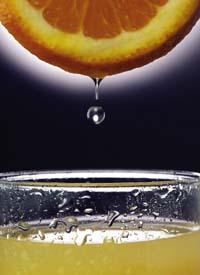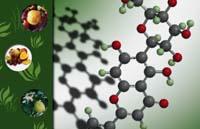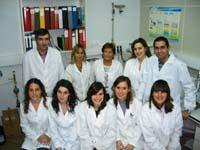Fingerprint for fruit juices

Polyphenolic compounds
In order to ensure that fruit juices are not adulterated, the researchers of the Analytical Chemistry department of the UPV/EHU are working on identifying the fingerprints of juices by analyzing the polyphenolic chemical compounds present in all fruits. There are thousands of polyphenols in plant kingdom species and in each species different polyphenols appear, even in different quantities. Consequently, each fruit has a specific polyphenolic profile.
To analyze the polyphenolic profile of each fruit, UPV researchers use the technique called high resolution liquid chromatography (HPLC). This technique allows to know what polyphenol and how much they are in each fruit. In this way, they can know the difference between the different fruits in the polyphenolic profile.
However, to increase the safety of polyphenolic profiles, it is necessary to confirm the identity of all polyphenols that appear in these profiles. For this purpose they use another analytical technique, mass spectroscopy (MS).
Orange, mandarin, lemon...

The researcher Beatriz Abad, in her doctoral thesis, has found a quite exclusive marker for lemon and three markers for grapefruit. In addition, it has found that the use of more than one marker instead of a marker allows to detect food fraud more safely. He has also observed some basic differences between several finger marks and, with the help of some statistical tools, has found that these differences provide a fairly reliable degree of safety.
For example, you can say if the orange juice has been mixed with the grapefruit or not quite simply and safely; if the lemon has been mixed or not. However, the detection of mandarin in in orange juice is a more laborious and less reliable work. And it is that the fingerprints of mandarin and orange have many similarities.
So far, polyphenolic profiles of unadulterated fruit juices or polyphenolic finger marks have been defined. In the future they want to apply these fingerprints to juices in the market to detect possible falsehoods or frauds. The UPV researchers have already begun this work.

Buletina
Bidali zure helbide elektronikoa eta jaso asteroko buletina zure sarrera-ontzian











